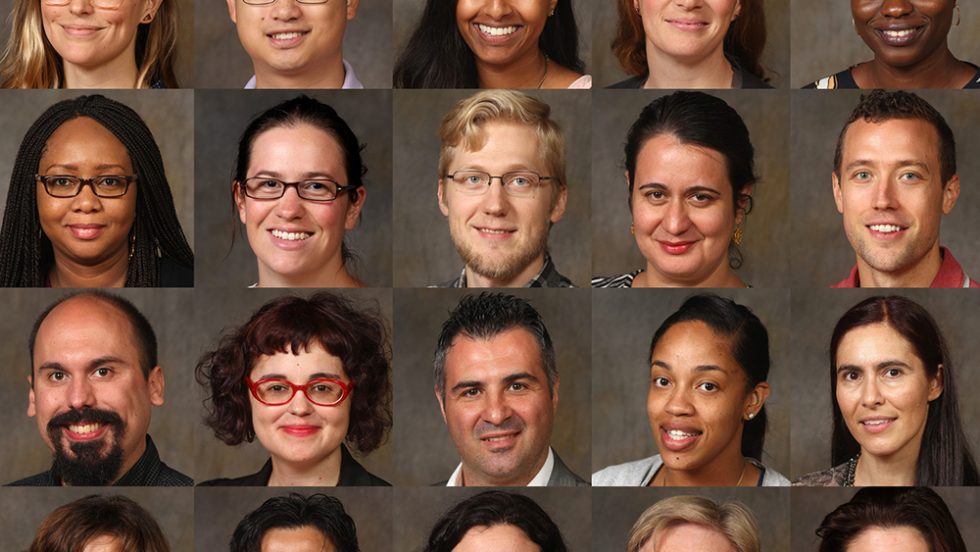
Adelphi is committed to being a model of diversity and inclusion, from faculty hiring practices to supporting the needs of all students.
Adelphi University is committed to being a model of diversity and inclusion. President Christine M. Riordan made this one of her institutional goals when she joined the University in 2015. Since then, Adelphi has seen great growth in faculty diversity.
Faculty Diversity
For the 2017–2018 academic year, Adelphi hired 28 new faculty members, 46 percent of whom are people of color. By comparison, 36 percent of new faculty hires were people of color in 2016, 33 percent were in 2015, and 30 percent were in 2014.
Adelphi’s faculty search committees took a proactive approach to sourcing this diverse talent. The members of each committee completed an orientation on best practices for achieving diversity and inclusion in the hiring process, as well as on strategies for effectively finding diverse talent.
Committee members also used the Harvard Implicit Association Test to become more transparent and self-reflective about how they approach the recruitment process. The test measures the strength of associations between diverse groups and someone’s evaluations or stereotypes of those groups. The purpose is to unearth implicit bias.
“Diversity among the faculty is important for a number of reasons,” said Christopher Storm, Ph.D., associate provost for faculty advancement and research. “By bringing voices into our community from different perspectives, we foster richer discussions that lead to better institutional decisions. We also have a diverse student body, and now there are more mentors and role models that they can look up to.”
More than 12 percent of Adelphi graduate and undergraduate students are black, and over 17 percent are Hispanic.
Adelphi also supports a diverse campus through a range of different programs. For example, the Diversity Certificate Program for staff and faculty members offers intensive training in awareness, tolerance and acceptance of a diverse student body. Adelphi also offers a Mentoring Program for students of color, LGBTQ+ students and veterans.
“I would like to see the University continue the progress it has made in the last two years,” said Perry Greene, Ph.D., vice president for diversity and inclusion. “This would include programs to ensure retention of diverse faculty and staff, assessing diversity in the curriculum, and becoming a model of diversity for other institutions.”